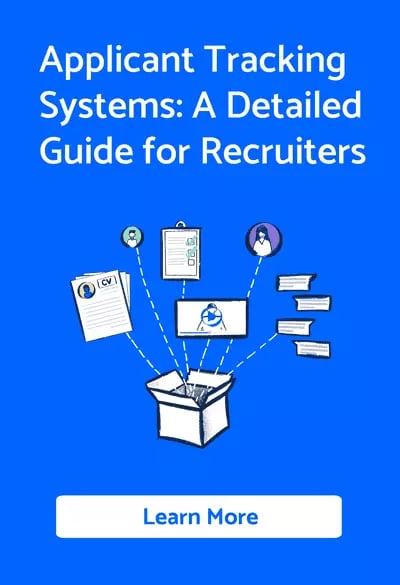
The COVID-19 countermeasures have resulted in millions of employees unexpectedly working from home (WFH) for the first time. As the crisis wears on, many employers, and employees, are considering whether to make the move to remote working permanent.
GoHire has always been a remote-working company, with our current team members based in the UK, Europe and Asia. We know first-hand the importance of ensuring the safety and well-being of our colleagues at all times, especially in a state of flux during a pandemic.
Although, like us, you may have spent the last four months working in your pyjamas and drinking coffee on-tap, there is a serious side to remote working that also needs to be taken into account.
Taking Remote Working Seriously
When the pandemic first hit, many UK businesses asked some or all of their workforce to work from home. A large number of these companies had not attempted remote working before on any scale, so introducing it was a big shock to the system for employers and employees.
For some employers, business continuity took priority over issues such as compliance with health and safety regulations. Indeed, many employers were, and perhaps still are, unaware of their health and safety obligations to their remote working employees.
Businesses may also be unwittingly operating without suitable Employers Liability (EL) insurance. By failing to comply with the terms of their EL policy, a business would be exposed in the event of a remote working accident.
With lockdown measures easing in the UK, companies are now starting to move their employees back into the office. However, even if a company had implemented a basic remote working self-assessment on day one, now may be the time for a detailed review.

What is the Employers’ Liability (Compulsory Insurance) Act?
EL insurance is a legal requirement under the Employers’ Liability (Compulsory Insurance) Act 1969.
Unless an employer is running a small family business or is a lone employee owning 50% or more of the company, EL insurance is compulsory.
An EL policy must cover the cost of compensation paid to an injured employee, with minimum cover of £5m required by law. £10m is increasingly offered by insurers as standard. Just as an employer’s duty of care extends to remote workers, so must the company’s liability insurance.
However, firms are encouraged to consider the actual level of risk and potential financial exposure and arrange cover accordingly.
Although the majority of policies do cover remote working, firms risk being caught out if they fail to fulfil their duties as set out in the policy terms.
At-Home Accidents Are The Most Common
It is often assumed that the risk of injury at home is relatively low and any health and safety obligations can be addressed at a later date.
However, according to RoSPA, more accidents happen at home than anywhere else, with most accidents occurring in the living room. The risk of injury is possibly even greater when employees first begin working from home as they are getting set up and acclimatising to their home working environment. Maybe think twice about having your laptop charging cable strewn across the room?
Employers are advised to address health and safety as early as possible. Even once the basics are covered, employers should consider whether the prospect of longer-term or permanent remote working means that other health and safety issues (such as back pain or eye strain) should be addressed in more detail.

Is Remote Working Covered in your EL Policy?
With a few exceptions, EL policies must cover remote working. However, what this means in practice and what employers must do to comply with their obligations under a policy, may vary.
Some firms will have had documented remote working procedures before the pandemic took hold. However, other firms may have used less formal remote working arrangements, as employees gradually migrated to WFH over time. These firms are more likely to be at risk, as the gradual transition might not have alerted the firm to check and update their EL cover.
Employers should waste no time in assuring which remote working checks and processes their EL cover requires. You should make sure that there are no terms and conditions that might invalidate the cover.
If remote working is already established in your company, now is still a good time to verify that suitable cover is in place.
Assessing and Ensuring a Safe Remote Working Setup
The Health & Safety at Work Act 1974 (HSWA) states that employers must “make a suitable and sufficient assessment of the risks to the health and safety of employees to which they are exposed whilst they are at work”.
Practically, it is acceptable for a company to implement an at-home risk assessment under the guidance of the employer.
It would be inconsistent for an employer to personally carry out the risk assessment at the employee’s home, to comply with social distancing as well as taking up precious working time of more than one individual. Even in pre and post-pandemic circumstances, employers are not generally expected to carry out a risk assessment in person.
For desk-based workers, the assessment should check the general safety of the employee’s workspace. Specifically, it should address the safety of the employee’s workstation, chair, PC, monitor, mouse, keyboard and any other equipment you supply.
The assessment can be a structured questionnaire that the employee completes, signs and returns. HR departments should be on hand to offer guidance and training.

Dealing With an Injury Without a Risk Assessment
Chris Salmon of Quittance Legal Services says, “if an employee is injured and the company did not make a suitable and sufficient risk assessment, the insurer cannot legally refuse to pay compensation to the employee. However, if the insurer believes that you neglected your duty of care, it could take legal action to recover their costs, including the value of the compensation, from the business.”
Recommended compensation awards are set by the Judicial College and can run to hundreds of thousands of pounds. The financial impact of such a claim could be catastrophic for a business.
It is therefore critical that remote worker risk assessments are carried out as quickly as possible. Free templates are available online, including from the Health and Safety Executive.
Conclusion
The majority of UK businesses already embrace the spirit of health and safety legislation. The temptation for employers to neglect health and safety administration in these exceptional times is understandable.
Nevertheless, the risk of employee injury when working from home remains high. There is also the risk to other members of a household, including children, that employers must consider. Whether your business is moving towards permanent remote working solutions, or are planning to return to the office in the coming weeks, you should prioritise a review of EL insurance cover and remote working risk assessments without delay.

About the Author
Chris Salmon is a co-founder and Director of Quittance Legal Services. Chris is a regular commentator on workplace injury law and occupational illness in the legal press.
By GoHire
31 Jul 2020 · 4 min read
We are GoHire, a talent hiring platform helping you improve your hiring in less time, with less effort. Follow us on Linkedin and Facebook for more updates!








